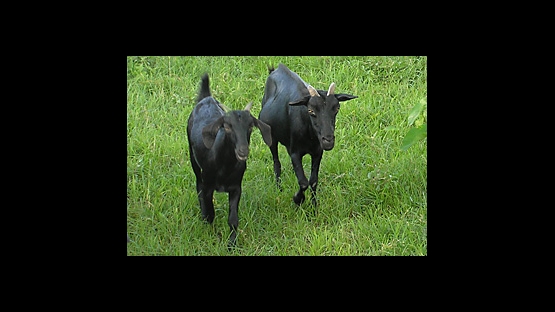Among the world´s poorest countries, Bangladesh is home to one of the richest treasures - prized black bengal goats. The dwarf-size animals are the source of meat, milk, and leather for families - and a big part of the national economy. But changing patterns of land use are threatening the animals´ future.
"Our fallow lands for grazing goats are reducing day by day," says Dr. M. O. Faruque of the country´s Department of Animal Breeding & Genetics at Bangladesh Agricultural University. "It´s because of our growing human population and the need to plant cereal crops."
Research supported by the IAEA and Food and Agriculture Organization (FAO) is helping Bangadesh plan and protect the goats´ future. Working with other countries in the Asian region, scientists are looking to learn more about black bengal goats and other livetock. A specific aim is to build up the capacity of national agricultural research systems to conduct research in livestock genetics and breeding using modern methods of molecular science.
"The goat is perhaps the most misunderstood and neglected, but nevertheless important species of livestock in the Third World countries," notes Prof. Md. Ruhul Amin, a colleague at the university. "They play an important role in our country's economy."
Bangladesh scientists are working with other experts to help goat herders and farmers adapt to the changing environment. About 80% of the country´s people live in the countryside, and raising goats and other livestock is a key part of their livelihood.
"Goats have typically been raised as scavengers, but now the traditional rearing system in Bangladesh is under threat," says Dr. Faruque. New approaches to rearing and managing the herds are needed, he says. One government priority is to train tens of thousands of farmers on better ways to raise black bengal goats. Results of the FAO/IAEA research programme are contributing to scientific knowledge about animal health and reproduction underpinning such steps.
No one knows exactly how many goats graze in Bangladesh - some estimates run as high as 30 million. Together they provide about 30 thousand tons of meat and 20 million square feet of hides and skins, besides milk and other products families depend upon.
"Meat and skin obtained from the Black Bengal are of excellent quality and fetch high prices, even in the local market," says Prof. Ruhul Amin.
The FAO/IAEA-supported research, launched in 2004 to run over two phases, is analyzing more that 100 sheep and goat breeds by applying nuclear and molecular tools for DNA analysis. Together, the breeds represent the most important livestock species in the Asian region, numbering nearly one billion animals.
See Story Resources for more information about the research.


